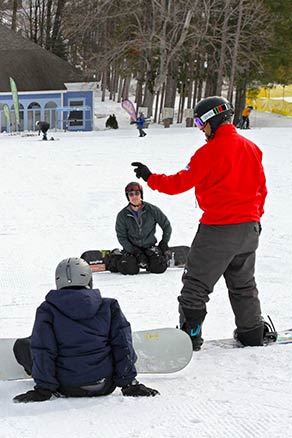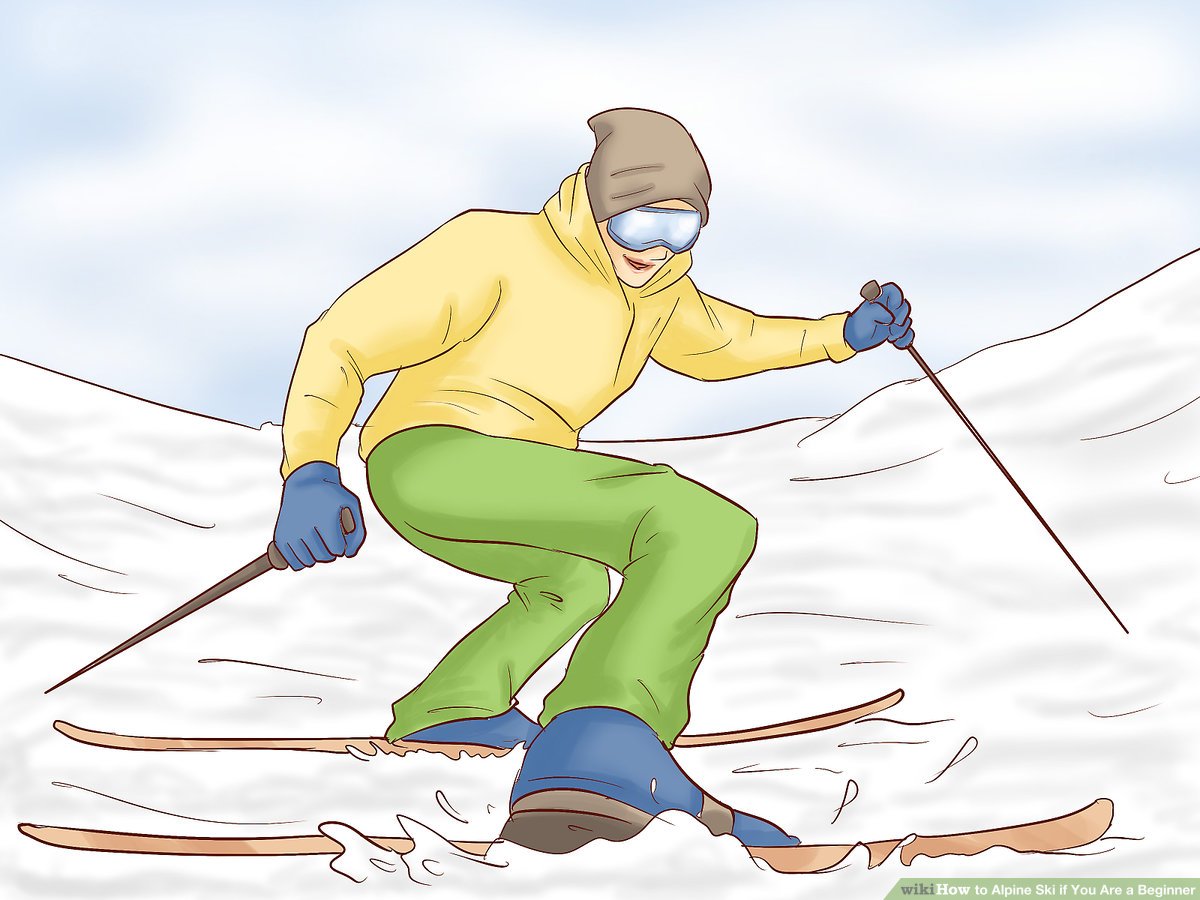
Ski snow pants are the perfect piece of winter equipment to keep you dry and warm during your outdoor adventures. These pants can withstand both snowy and sunny days. These pants include an integrated jacket to-pant attachment, scuff protectors, and boot gaiters.
Pants come in many styles and materials, so it's easy to shop for the right pair. It is important to be aware of what to look out for when choosing a pair. It is important to pay attention not only to fit but also material when you are shopping for snow pants.
Ski snow pants usually have waterproof shells and a lining that keeps you warm. You can choose between insulated and uninsulated models depending upon your preference. ThermaTech snow pant offers the best of both, with an adjustable waistband as well as 85 grams of heat-trapping insulation. This keeps you warm when temperatures drop below zero degrees.

An extendable leg, which can be worn over a pair boots, an O ring for keeping important items close to hand and a pair well-made pockets are other features you should look for. You will have a much better time on the slopes by choosing the right pair ski pants.
The best ski snow pants can be expensive, but there are many affordable options that will suit your needs. Some of the best-known brands have a long tradition of creating quality clothing.
There are many options for snow pants. The one that is best for you depends on where and what you intend to use them for. If you are going to be skiing in a warm environment, a simple pair of snow pant may suffice. You should choose a pair with more advanced features if you are an avid backcountry skier.
Snow pants that are waterproof to at least 10,000mm will be the best. The best snow pants will have a waterproof rating of at least 10,000mm. Some pants even have an integrated belt and a zippered pocket.

Having a pair of ski pants that's a good fit is the best way to keep your equipment from ripping and falling down, respectively. A zipper that is easy to open and close, as well as a belt with pass clips and an integrated waistband are all important features. A hook-and-loop adjustable fastener is another important feature that you should be looking for. It pairs well with belt loops to ensure a snug fit.
Side zippers at the side of the best pants allow you to remove and replace your boots quickly without taking off your pants. You will also appreciate a pair of pants that have an extendable leg, which can be cinched at either the back or front.
A pair of boots and bibs are a great combination to keep you warm and dry. A bib, like many other items, is not always the most fashionable option. However, it can help keep snow from your boots.
FAQ
You should not forget these things when you travel.
When you travel, you'll find yourself in situations with little time to make decisions. Prepare to be flexible.
Sometimes you might find yourself stuck for days, weeks or months. If you plan ahead, you will have food, water and shelter. If you don't have a plan, you might have to make do.
In these situations, you will probably need to rely upon what you know best. It means you have to be able to quickly make decisions based upon your experience and instinct.
Sometimes, however, you will not have any other choice. It could happen that you are stranded without cell phone coverage, run out of gas, or have been robbed. In those situations, you'll have to adapt quickly to whatever situation presents itself.
The key to success is to stay calm, remain focused and act decisively. Don't panic. Instead, be calm and focus on what you can do.
You can, for example, choose the direction you want to travel if you get lost in the woods. If you are hungry, you can eat mushrooms or berries. You can also drink rainwater and melt snow if you feel thirsty.
If you are tired, you can take a break. You can wrap up if you're cold. If it is wet, you have the option to change clothes. No matter what you do, it will make you feel better to stay positive.
How do you travel light?
There are no right or wrong answers when packing for a vacation. These tips will help guide you in choosing what to bring on your trip.
-
Only bring what you need.
-
You should only pack what you actually wear.
-
Avoid buying too many things.
-
You should ensure that you have enough space in your luggage.
-
Always make sure you have everything you need.
-
Make use of the free storage facilities
-
Reusable water bottles can be used instead of buying bottled.
-
You can carry a backpack rather than a suitcase.
-
Walk or cycle whenever possible instead of using public transport.
-
Select the right bag size
-
Avoid carrying bulky items.
-
Prepare for anything.
-
Don't leave anything behind
What should you bring on vacation?
It is important to plan what you will do during your vacation. Not just packing clothes. Consider where you're going and how much time you'll be staying there.
The first thing you need to do is think about what types of activities are most appealing to you. For example, if you are going to an exotic destination, then you may want to try scuba diving. You may also be interested in participating in local festivals and events, especially if your stay is longer.
It is crucial that you inform the people responsible for your care if you have any health problems. They can then plan accordingly.
Statistics
- You can use compression sacs or cubes to reduce the volume of your clothes by up to 80%—this is especially convenient for bulky items such as sweaters and jackets. (eaglecreek.com)
- Case in point: the private island of Ilha Caldeira, less than seven miles off the coast as part of the Primeiras and Segundas Archipelago, is located within the marine-protected area with 20 percent of the country's intact living coral. (travelandleisure.com)
- Between the ages of 11 and 13, kids, or tweens, will likely want some autonomy but also need boundaries. (travelandleisure.com)
- No Checked Bags: No Alcoholic beverages with more than 70% alcohol (over 140 proof), including grain alcohol and 151 proof rum. (tsa.gov)
- According to Maori legends, this park holds 14 fjords that were all carved by a giant stonemason with an adze. (busytourist.com)
External Links
How To
How to travel inexpensively
Travel is a very popular activity. But, it can be expensive. Traveling can be expensive due to the high cost of airfares, hotels, rental cars and transportation. Even worse if you have children. How can we make travel more affordable?
It is possible to start by looking for ways that we can cut down on costs. Plan your trip well in advance to receive discounts on airfares, hotel rooms and car rentals. If you choose a budget hotel, you can save money. If you don't want to spend too much, choose a hostel because they offer basic accommodations for less than $20 per night. You can also take public transport to rent a bedroom in someone's house or use Airbnb.
You should also consider spending a little bit more to avoid paying extra fees. If there's no Wi-Fi, then you might consider purchasing a SIM card. This way, you won't have to worry about paying roaming charges. You can also order pizza or pasta outside to reduce the cost.
Another thing you can do is try to share the expenses with others. If you have relatives or friends who are willing to split the bill, this is a great idea. Or maybe you can work together to book tickets. Sharing expenses helps you save money and reduces stress.
If you still can't afford to travel, then remember that you can always go hiking or camping. These activities are often completely free. You just need to pack supplies such as water, snacks, sunscreen, insect repellent, a first aid kit, a flashlight, a tent, a sleeping bag, etc.
There are many ways that you can make traveling more affordable. You can think creatively and come up unique ideas.